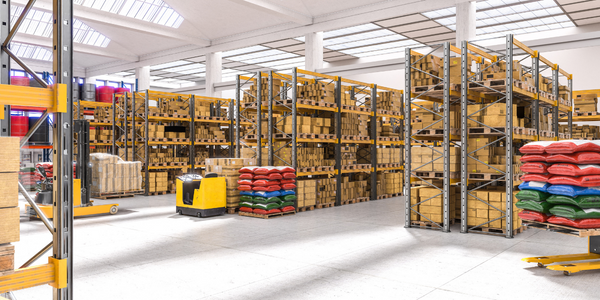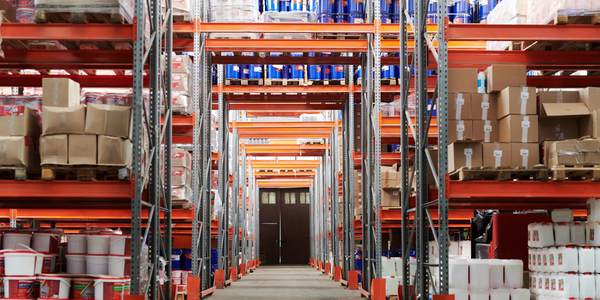Customer Company Size
Large Corporate
Country
- Worldwide
Product
- Blue Yonder warehouse management system
- Robotics Hub
- Microsoft Azure
Tech Stack
- Cloud Computing
- Artificial Intelligence
- Machine Learning
Implementation Scale
- Enterprise-wide Deployment
Impact Metrics
- Cost Savings
- Productivity Improvements
Technology Category
- Platform as a Service (PaaS) - Connectivity Platforms
Applicable Functions
- Warehouse & Inventory Management
Use Cases
- Warehouse Automation
- Inventory Management
Services
- Cloud Planning, Design & Implementation Services
- System Integration
About The Customer
DHL Supply Chain is the world’s leading third-party logistics company. With over 150,000 employees in 50 countries and territories, the company delivers excellence in supply chain, warehousing, transportation, and distribution activities for customers around the globe. As part of its Digital Transformation Strategy, DHL Supply Chain aims to implement robotics and other automation solutions across 2000 global sites. The company is committed to rapidly establishing its technology leadership and views the incorporation of automation and robotics as a key goal in achieving this.
The Challenge
DHL Supply Chain, a leading third-party logistics company, is on a mission to establish its technology leadership through its Accelerated Digitalization Initiative. A key goal of this initiative is to incorporate automation and robotics at more than 2000 sites globally. However, orchestrating this implementation from a global perspective posed a significant challenge. The company needed a solution that could seamlessly integrate a range of robotics with its existing warehouse management system (WMS).
The Solution
DHL Supply Chain partnered with Blue Yonder to develop the Robotics Hub, a cloud-based, “plug and play” solution that minimizes integration time. The solution significantly reduces the time and programming efforts required to onboard new automation devices into warehouse facilities. It leverages Microsoft Azure and cloud platform services to deliver a unique level of speed and responsiveness. The Robotics Hub provides a single, shared dashboard for robotics, allowing DHL employees to immediately view warehouse progress, check the status of key tasks, and feed real-time work-order updates back into their WMS. The next step for DHL is to enhance the Robotics Hub by leveraging machine learning and artificial intelligence to optimally orchestrate all tasks in logistics between associates and the robotics solution.
Operational Impact
Quantitative Benefit

Case Study missing?
Start adding your own!
Register with your work email and create a new case study profile for your business.
Related Case Studies.

Case Study
Hospital Inventory Management
The hospital supply chain team is responsible for ensuring that the right medical supplies are readily available to clinicians when and where needed, and to do so in the most efficient manner possible. However, many of the systems and processes in use at the cancer center for supply chain management were not best suited to support these goals. Barcoding technology, a commonly used method for inventory management of medical supplies, is labor intensive, time consuming, does not provide real-time visibility into inventory levels and can be prone to error. Consequently, the lack of accurate and real-time visibility into inventory levels across multiple supply rooms in multiple hospital facilities creates additional inefficiency in the system causing over-ordering, hoarding, and wasted supplies. Other sources of waste and cost were also identified as candidates for improvement. Existing systems and processes did not provide adequate security for high-cost inventory within the hospital, which was another driver of cost. A lack of visibility into expiration dates for supplies resulted in supplies being wasted due to past expiry dates. Storage of supplies was also a key consideration given the location of the cancer center’s facilities in a dense urban setting, where space is always at a premium. In order to address the challenges outlined above, the hospital sought a solution that would provide real-time inventory information with high levels of accuracy, reduce the level of manual effort required and enable data driven decision making to ensure that the right supplies were readily available to clinicians in the right location at the right time.

Case Study
IoT Solution for Cold Chain
Most of the customer's warehouses run on utility and generator power. Since these warehouses are in remote locations, power outages are a very common scenario. Diesel fuel, thereby, becomes a significant cost for these warehouses. Energy consumption was also very high due to the lack of a consistent temperature throughout the facility. This lack of a consistent temperature in all areas and no way to control it, resulted in the customer losing a significant amount of their temperature sensitive goods due to spoilage.

Case Study
DSV Road levels their workflow and decreases stress thanks to 4 BT Autopilots
During peaks in the workflow employeescan experience stress which makes them prone to causing damage. Avoiding these peaks also eliminates the need to hire temporary workers that require extra time and costs for education.

Case Study
Hardware Retailer Uses Data Warehouse to Track Inventory
Ace tracked which products retailers ordered, when they were ordered and shipped. However, the company could not track or forecast actual sales. Data used for reporting was up to a one-week old, owing to performance and data cleansing issues. Requirement to integrate wholesale and inventory data with POS data to help drive key business decisions, improve category management, lower inventory costs and optimize pricing. Reliance on custom coding to integrate POS data was excessively resource intensive and led to major performance constraints.









